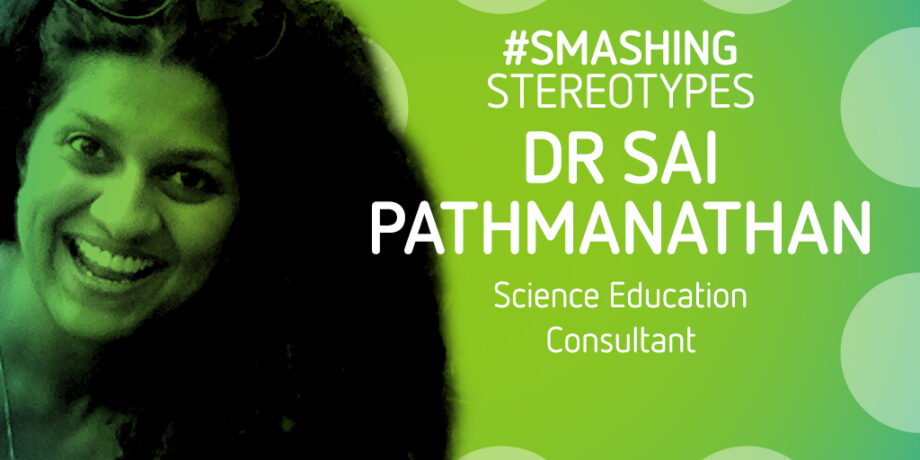Dr Sai Pathmanathan
Science Education Consultant
Sai used to be a neuroscientist (working in a research lab and all) but decided to move into science communication and education. She has since worked in science education at The Physiological Society, Nesta, Planet Science, Ignite! – to name just a few places.
Sai’s MA research looks into how young people learn accurate science from the entertainment media. She currently runs afterschool science clubs and community workshops and works with teachers, scientists, artists and pre-schoolers…but not at the same time (well, not always). Sai has also released her first book Utterly Jarvellous, 50 Primary Science Activities You Can Do In A Jar – just in time for British Science Week!
I can’t say I chose to take this career path into science education and communication, it opened up to me as I followed everything that interested me.
Starting with science A-levels, I enjoyed Biology so much that I chose to study for a Biological Sciences degree. I was particularly interested in neuroscience courses, so I moved into research resulting in a Neuroscience doctorate…during which I did a lot of communicating to the public about my research! As I was speaking to people working in science communication, I learnt more about science education and learning jobs, which sounded like my kind of thing.
I now work in science education, mainly informal science learning. This includes in-school workshops, public engagement events, community and family engagement and after-school science clubs. And writing, trialling and developing science activities.
What excites me most about my job is that I learn so much every day and get to share these learnings with others. I love meeting people from all professions and fields – following what interests me! Working with the children’s media, toy, publishing, greeting cards and gift industries has opened up possibilities to engage wider audiences about whatever ‘science-y thing’ I’m working on, and gain new perspectives too.
I know everyone says ‘every day is different’ when talking about their jobs, but when you’re a freelancer working on a variety of distinct projects simultaneously, it’s difficult to describe a typical day! For example, yesterday I put a presentation together based on my new book, ‘Utterly Jarvellous’. I also designed a resource on growing from vegetable scraps (while checking on my own sprouting scraps!), tested out an idea for a fossils activity, spoke to a community group about the different COVID-19 vaccines, and had a meeting about folktales!
If I could ‘smash’ one stereotype in STEM, it would be that you need to be nerdy, geeky or immensely clever to study or engage with any of the STEM subjects. I’ve always loved learning new things but wasn’t keen on school (even though it was a great state school), revising for exams or anything vaguely academic. But I knew what I enjoyed and that required working hard to do what I wanted to do.
In science communication, there’s a common misconception that we’re all clever and know everything. We don’t, and never will. Science is always evolving, which is why there’ll always be jobs in it!
Many people often think that freelancers, like me, just sit on a computer all day on their own. In reality, most of us work with multiple huge teams at the same time. One of my projects involved as many as 30 individuals working together. With job roles ranging from paediatric dentists, children’s authors and illustrators, behavioural psychologists and phonics experts. The outcomes and resulting materials from diverse teams are mind-blowingly innovative and can capture the attention and imaginations of the widest audiences.
When teams are not diverse there is a complete lack of creativity. There’ll only ever be one point of view from a homogenous team as everyone will think the same way, agreeing and disagreeing on all the same points.
Innovation comes when differing views are discussed with humility, patience and tolerance and then mutually compromising to give the best result. When we look at the most unique and creative engagement projects, they’ve been put together by genuinely diverse teams, in all senses of the word ‘diverse’.
Check out this doodle to learn more about Sai’s work!
Click here to go back to view more scientists who are Smashing Stereotypes.
The information featured in this profile was last updated in March 2021.
The Smashing Stereotypes campaign is supported by 3M.

